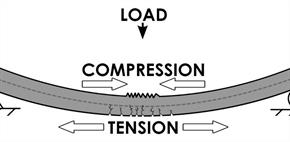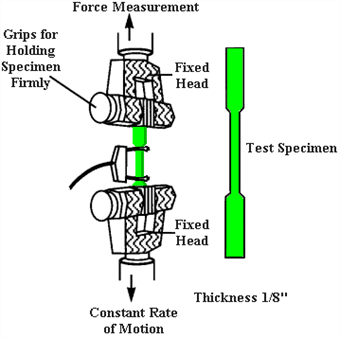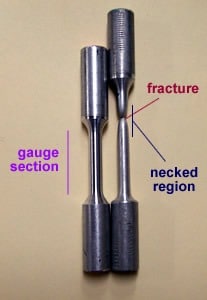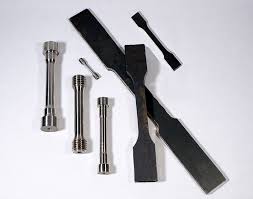What’s the Difference Between Yield Strength and Tensile Strength?
Knowing both the yield and tensile strength is important because they each have an impact on the production and use of steel (and many other materials, but we will focus on the steel). So, what’s the difference between yield strength and tensile strength? The biggest difference is that tensile strength is catastrophic, where yield strength is only a permanent deformation. Below we will go into more details about both of these, as well as talk about what elongation is in respect to tensile strength.
What Is Tensile Strength?
Tensile by definition means capable of being drawn out or stretched. Tensile strength is the resistance of steel to breaking under tensile tension. It’s used to specify the point when steel goes from elastic (temporary) to plastic (permanent) deformation. Usually, it’s measured in units of force per cross-sectional area. Once a piece of steel is pulled past its tensile stress point, it will split apart.

Tensile strength of steel will show us how much tensile stress the steel can withstand until it leads to failure in two ways: ductile or brittle failure.
- Ductile failure – think of this as the preliminary stage of failure, where it is pushed beyond the yield point to permanent deformation.
- Brittle failure- this is the final stage where the tensile strength measurement is taken.
In essence, tensile strength is measured by the maximum stress that the steel can withstand while being stretched or pulled before breaking.

What is Yield Strength?
Yield strength is the maximum stress that can be applied before it begins to change shape permanently. This is an approximation of the elastic limit of the steel. If stress is added to the metal but does not reach the yield point, it will return to its original shape after the stress is removed. When the stresses exceed the yield point, the steel will not be able to bounce back. Yield strength represents the upper limit of the load that can be safely applied to the metal, which makes it a very important number to know when designing components.
Elongation
Elongation is the percentage of stretch from the original length of the steel to the point of failure, showing how ductile the steel is. Ductility is the capability of the steel to be stretched out without becoming more brittle or weaker in the process. The more ductile it is, the more formable the product is. Elongation is a good measurement to look at to determine if you’re choosing the right product for the project.


While tensile strength is important, you shouldn’t make your decision based solely on that. You also want to take into consideration the yield point, the difference between tensile and yield points, and the elongation percentage.
If you liked this post, check out our post on Hardness vs Hardenability to learn the differences between the two in the steel industry!